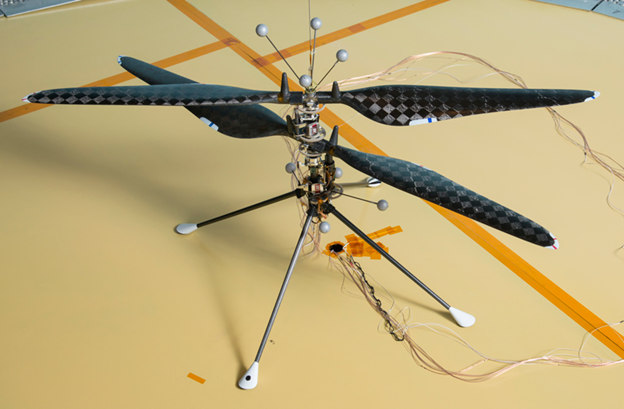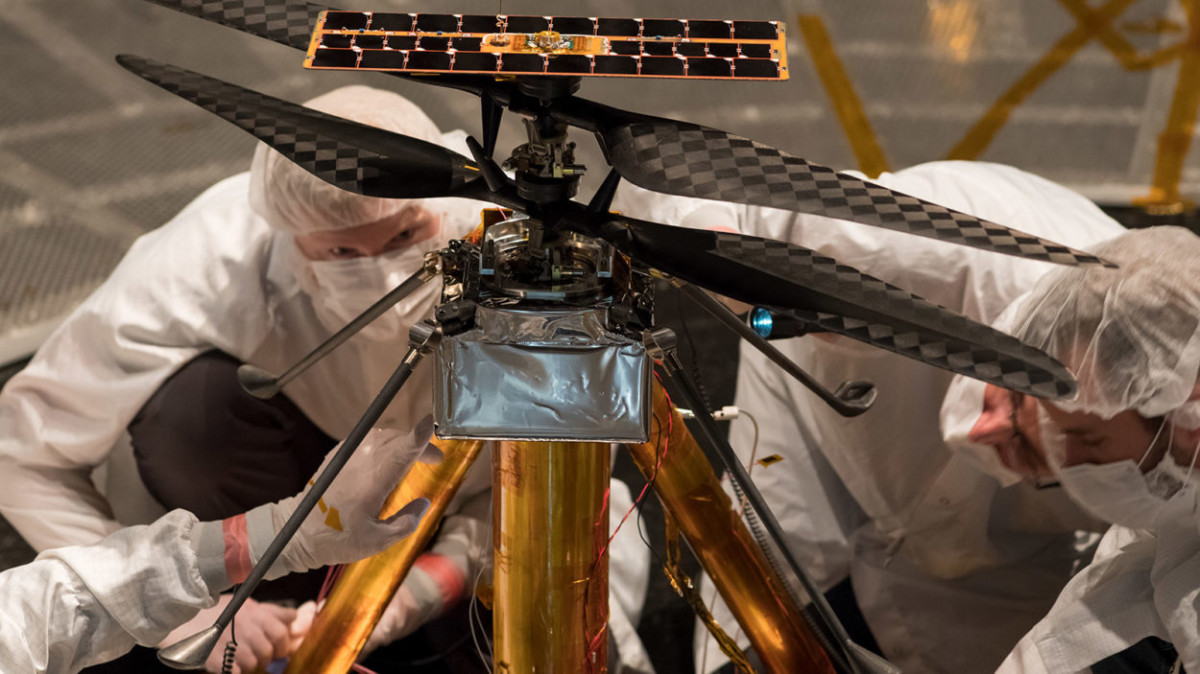Jumbo Vacuum Chamber Prepares NASA’s Mars Helicopter For Off-World Flight

In the not-so-distant future of 2021, the planet of Mars will have a helicopter flying around on its surface. The helicopter, cleverly named the Mars Helicopter, will travel to the Red Planet in July of next year nestled inside the Mars 2020 rover, and will begin flight testing on the planet surface in February of 2021. The 4-pound, drone-like piece of equipment will take flight around 5 times during the rest of its days on Mars and will be completely autonomous.

Before being cleared for takeoff, however, the Mars Helicopter has had to go through many strenuous tests to ensure that it can survive the harsh conditions of the Red Planet, which has had nights with temperatures of minus 130-degrees Fahrenheit in the area the helicopter will be located.
How did NASA prepare the helicopter for these extreme, unwavering conditions? You guessed it: a vacuum chamber! The NASA Jet Propulsion Laboratory, located in Pasadena, CA, tested the helicopter in their state-of-the-art Space Simulator, which is a giant, 25-foot-wide vacuum chamber. To simulate the conditions of Mars’ atmosphere, scientists used the vacuum to suck out all nitrogen, oxygen, and other gases in the chamber and injected carbon dioxide (CO2) in their place, which is the main component of the atmosphere.

The team at JPL also had to mimic Mars’ gravity, which is only 2/3 of Earth’s gravity. They accomplished this by constructing a “gravity offload system” inside the vacuum, which was a motorized lanyard connected to the top of the helicopter that produces an uninterrupted tug on the device. The system performed perfectly.
“The gravity offload system performed perfectly, just like our helicopter,” said Teddy Tzanetos, the test conductor for the project. “We only required a 2-inch (5-centimeter) hover to obtain all the data sets needed to confirm that our Mars helicopter flies autonomously as designed in a thin Mars-like atmosphere; there was no need to go higher. It was a heck of a first flight.”
The helicopter had a second flight in the vacuum chamber the day after, and “logged one minute of flight time at an altitude of 2 inches”. That would be the last flight for the helicopter before it takes off from the surface of Mars in 2021.

Until then, the Mars 2020 project at JPL in Pasadena will manage rover development, while NASA’s Launch Services program in Cape Canaveral will manage launch in preparation for the July 2020 takeoff. To stay up-to-date on the project, check out The Jet Propulsion Laboratory’s website, which is updated regularly and provides the latest news and developments.
Sources
NASA’s Mars Helicopter Completes Flight Tests. (2019, March 28). Retrieved June 28, 2019, from https://www.jpl.nasa.gov/news/news.php?feature=7361
Wall, M. (2019, March 29). Ready for the Red Planet! NASA’s Mars Helicopter Aces Key Flight Tests. Retrieved June 28, 2019, from https://www.space.com/nasa-mars-helicopter-aces-flight-tests.html
